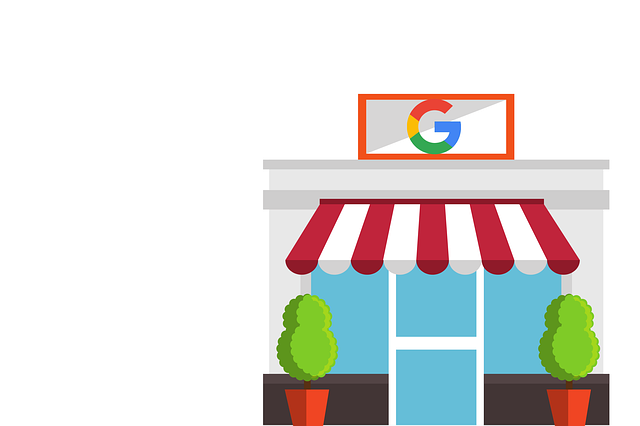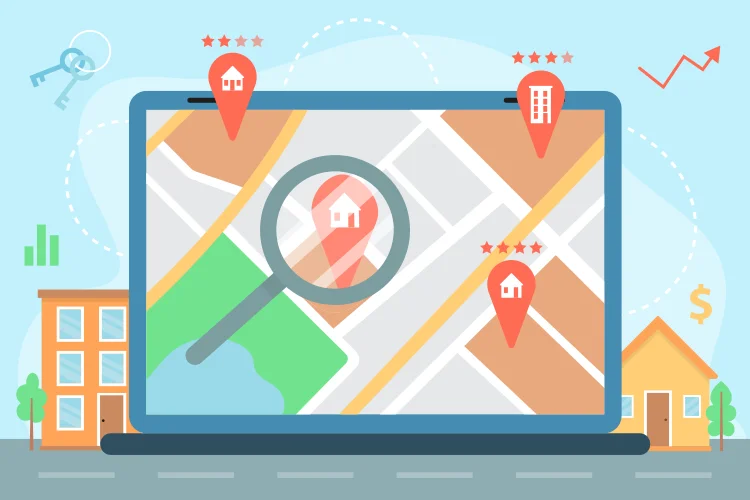Did you know that around 89% of people search for local businesses on their mobile devices every week, with 72% visiting a store within five miles? In today's highly competitive business landscape, it's more crucial than ever for local businesses to stand out in organic search results. In this blog post, we will dive into the local SEO world, revealing the local SEO strategies that will help you boost your organic local search rankings and attract relevant customers right to your doorstep.
Short Summary
-
Local SEO is essential for businesses aiming to attract local customers.
-
Develop a successful strategy by focusing on keyword research, optimizing website content, and creating localized content.
-
Leverage Google Business Profile, build local citations/backlinks, and optimize the mobile experience to maximize search results.
Understanding Local SEO

Local SEO is the process of improving the online visibility of local businesses, with an emphasis on geography. It involves optimizing your website, online presence, and content to appear in local search results and attract local customers.
While traditional SEO focuses on improving your website's visibility in general search results, local SEO targets search with local intent and ranking factors such as city or zip code. This makes it essential for businesses that serve a specific geographic area to invest in local SEO strategies and tools to stay ahead of their competition.
The Importance of Local SEO
Local SEO is vital for businesses catering to a particular geographic region, as it helps them appear in local search results and draw in relevant traffic. People searching online for a product or service near them are more likely to convert into customers. A well-executed regional SEO strategy can increase online search visibility, more relevant traffic, and increased sales.
Search engines like Google consider several factors when compiling a list of local results for their users. These include local content, social profile pages, links, and citations. All these elements work together to deliver the most accurate results.
By optimizing your online presence for local searches, you ensure that your business shows up in front of potential customers at the right time and place, boosting your chances of attracting and retaining local customers.
How Local SEO Differs from Traditional SEO
Local SEO focuses on optimizing for local searches and target keywords such as city or zip code, while traditional SEO targets general inquiries. Local SEO includes unique elements like Google My Business listing, NAP (Name, Address, and Phone Number) citations, reviews, and links that target keywords in a specific geographic area.
For example, NAP citations refer to mentions of your business's name, address, and phone number online, providing search engines with consistent and accurate information about your business's physical location.
Industry-focused online directories and blogs also help searchers find businesses related to their search query within their local community.
By leveraging these elements of business online here, you can boost your online visibility and attract local customers actively searching for your products or services.
Developing a Solid Local Search and SEO Strategy

To excel in local SEO, developing a solid strategy that includes keyword research, on-page optimization, and creating location-specific content is crucial. Focusing on these core components ensures that your local restaurant or website is well-equipped to rank high in local search results and attract the right audience.
Let's dive into these components to understand how they contribute to a successful local SEO strategy.
Keyword Research for Local Search Engine Optimization
Keyword research is the foundation of any successful local SEO strategy. You can optimize your website's content to rank higher in local search results by identifying relevant keywords that customers may use to find businesses like yours.
Begin keyword research tools by assessing your products and services to generate a list of service-based keywords. Use local SEO tools to mine search engine algorithms for these terms and recognize geo-specific keywords. Evaluate search volume to determine which keywords to focus on your website.
To expand your list of service-based keywords, consider using your existing keywords as "seeds" to discover additional services being sought by users.
-1-width-500-height-500-name-Email campaign-amico (1)-1.webp)
Assess search volumes by combining terms that summarize your services with keywords targeted by competitors. Use SEO tools to perform keyword research on these terms and evaluate search volume and competition level for local keywords. By identifying local intent in your keywords, you can optimize your website to attract customers, explicitly searching for businesses in your area.
Optimizing On-Page Local SEO Work and Elements
On-page SEO elements are crucial for local SEO success, as they help search engines understand your website's content and rank it accordingly. To optimize your on-page SEO elements, incorporate geo-targeted keywords in your URL, title, header, meta description, and body content. This signals to search engines that your website is relevant to users searching for local businesses in your area.
Moreover, including specifications in your on-page SEO assets, especially for each location of your business, is essential to maximize the effectiveness of local search ranking and "near me" local searches.
By optimizing your on-page SEO elements, you ensure that your website is well-equipped to rank high in local search results and attract potential customers.
Creating Location-Specific Content
Localized content is essential for attracting a local audience and establishing a local presence. By developing location-specific content, you provide valuable on-page local signals that search engines use to rank your website in local search results.
This type of content is essential for businesses with multiple brick-and-mortar locations, as it helps drive relevant traffic to each site.
To create location-specific content, start by optimizing your H1, H2, and H3 headings, crafting keyword-optimized body content, incorporating internal links, including images, and optimizing for mobile search.
Additionally, consider highlighting customer success stories and case studies that showcase your business's local impact.
By using local contractors to create localized content, you can effectively target local searchers and become a local authority in a specific location of your industry.
Leveraging Google Business Profile

Leveraging Google Business Profile (formerly known as Google My Business) is essential for any local SEO strategy, as it directly impacts your visibility in local search results and Google Maps. By claiming and verifying your business listing, optimizing your profile with relevant information, and encouraging customer reviews, you can boost your local SEO rankings and attract more potential customers.
Claiming and Verifying Your Listing
Claiming and verifying your listing on Google Business Profile is the first step to leveraging this powerful platform for local SEO success. Once you've claimed your listing, you must add your business details, photos, local links, and posts to optimize visibility.
-width-500-height-334-name-92a404ee-465a-4804-98ec-e5b6c0df580b (1).webp)
Ensuring that your business name and information are complete and consistent across all directories is also crucial for appearing in local search results and map packs.
By claiming and verifying your listing, you provide search engines with accurate and consistent information about your business, making it easier for potential customers to find you in local search results. Plus, having a complete and verified listing increases your chances of appearing in Google's coveted map packs, which can significantly boost your visibility and click-through rates.
Encouraging Customer Reviews
Encouraging customer reviews is crucial for achieving high local SEO rankings. Positive reviews improve your online reputation and provide valuable social proof that can influence potential customers to choose your business over competitors.
To generate positive customer reviews, consider conducting exit interviews and sending follow-up emails to customers, asking them to leave a review on platforms that generate customer reviews, like Google Business Profile, Yelp, and Facebook.
Responding to negative reviews is also important, as it demonstrates your commitment to customer satisfaction and can help turn a negative experience into a positive one. By actively encouraging and managing customer reviews, you can boost your local SEO rankings and attract more customers to your business.
Building Local Citations and Backlinks

Building local citations and backlinks is essential to any successful regional SEO strategy. Local authorities, which include mentions of your business's name, address, and phone number (NAP) on other websites and directories, help search engines understand your business's location and improve your visibility in local search results.
Meanwhile, local backlinks play a crucial role in your organic traffic, boosting your website's authority and ranking in search results. This section will discuss how to identify high-quality local directories and pursue local link-building opportunities.
Identifying High-Quality Local Directories
Identifying high-quality local directories is essential for building local citations and improving your online presence. Examples of high-quality local business directories include Google Business Profile, Facebook, LinkedIn, Apple Maps, TripAdvisor, and Yelp.
When submitting your business information to these directories, it's crucial to ensure consistency and completeness across all listings and remove any duplicate business listings beforehand.

Maintaining accurate and consistent information on high-quality local directories, you can help search engines better understand your business's location and improve your visibility in local search results. This, in turn, can drive more relevant traffic to your website and increase your business hours' chances of attracting new customers.
Pursuing Local Link-Building Opportunities
Local link-building opportunities can help you gain inbound links from other businesses in the same geographic area, boosting your website's authority and local SEO rankings.
Strategies for pursuing local link-building opportunities include networking with other local businesses, sponsoring events, guest blogging, and engaging in the local community.
By actively pursuing local link-building opportunities, you can enhance your online presence, attract more local customers, and establish your business as a local authority within your business category or industry. This can increase website traffic, improve brand credibility, and improve local search rankings.
Enhancing Your Website's Mobile Experience

With most local searches being conducted on mobile devices, enhancing your website's mobile experience is critical to local SEO success. A mobile-friendly website improves user experience and increases the likelihood of converting local searchers into customers.
This section will discuss the importance of responsive web design and page speed optimization for a seamless mobile experience.
Responsive Web Design
Responsive web design is an approach to web design that ensures your website looks good and functions well on all devices, regardless of screen size. This is crucial for a mobile-friendly website, as it prevents potential customers from leaving your site due to a poor user experience.
To ensure your website is responsive, you can use tools like Google's mobile-friendly testing tool to assess how your website displays on a mobile device.
By implementing responsive web design, you can provide a seamless browsing experience for all users, regardless of their device. This, in turn, can help you retain local searchers on your website and increase your chances of converting them into customers.
Page Speed Optimization
Page speed optimization enhances the loading time of web pages, which is essential for providing a positive user experience on mobile devices. Slow-loading pages can deter potential customers and negatively impact your local SEO rankings.
To optimize your page speed, consider compressing and optimizing images, reducing redirects, caching web pages, enabling browser caching, and minifying CSS, JavaScript, and HTML.
By optimizing your website's page speed, you can improve its performance on mobile devices and ensure a smooth browsing experience for local searchers. This can lead to increased website traffic, higher local search rankings, and, ultimately, more customers for your business.
Monitoring and Measuring Local SEO Performance

Monitoring and measuring your local SEO performance is essential for tracking progress, identifying areas for improvement, and making necessary adjustments to your strategy. By utilizing local SEO tools and setting goals and KPIs, you can effectively track your website's performance in local search results and measure the success of your efforts.
This section will discuss how to use local SEO tools and set goals and KPIs to monitor and measure your local SEO performance.
Utilizing Local Searches and Search Engine Optimization Tools
Local SEO tools like Moz Local, BrightLocal, and Yext can help you identify issues and track rankings for your website in local search results. These tools can also assist you in optimizing your content, monitoring your performance, and gaining insights into your competitors.
By leveraging these tools, you can ensure that your website is well-equipped to rank high in local search results and attract relevant customers.

In addition to these tools, you can also use Google Search Console and other free tools and analyzers available online to monitor your website's performance and identify areas for improvement. You can make data-driven decisions and optimize your strategy to achieve the best results by continually monitoring and measuring your local SEO performance.
Setting Local SEO Goals and KPIs
Setting local SEO goals and KPIs is essential for tracking your progress and measuring the success of your efforts. By establishing clear goals and KPIs, you can monitor your website's performance in local search results, identify areas for improvement, and make data-driven decisions to optimize your strategy.
Some examples of local SEO goals and KPIs include improving your website's visibility in local search results, increasing the number of relevant visitors to your local ranking or website, and boosting conversions and sales from local customers. By tracking these metrics, you can assess the effectiveness of your local SEO efforts and make necessary adjustments to achieve optimal performance.
Summary
In conclusion, local SEO is essential to any successful online marketing strategy for businesses targeting a specific geographic area. By understanding the importance of local SEO, developing a solid plan, leveraging Google Business Profile, building local citations and backlinks, enhancing your website's mobile experience, and monitoring and measuring your performance, you can boost your local rankings and attract more customers to your online business name.
As the digital landscape continues to evolve, staying ahead of the competition will require a strong local SEO strategy, and the tips and strategies outlined in this blog post will help you pave the way to success.
Frequently Asked Questions
What is local SEO strategy?
Local SEO is a search engine optimization strategy that focuses on optimizing a website to show up in local search results. This includes a variety of tactics, such as creating geographically targeted content, using local sites, optimizing for local keywords, and building links from local business directories and other search engines.
It is an essential part of any digital marketing strategy for businesses with a physical presence or those targeting customers in their area.
What are the top 5 SEO strategies?
Following the five SEO strategies outlined above, you can take your website from obscurity to the top of the search engine rankings and begin reaping the rewards.
With the right approach, you can ensure that the right people see your website and that your content is engaging and relevant. This will help you to build a solid online presence and increase your business visibility further.
By optimizing your website.
What are the three pillars of local SEO?
The three critical pillars of local SEO are proximity, relevance, and authority. Local SEO combines technical and creative elements to ensure businesses appear in localized search engine results and be seen as relevant by potential customers nearby.
Proximity refers to the geographic area a local business often serves, relevance speaks to the content a local business owner provides on their website and other digital spaces that reflect its core services, and authority denotes the trustworthiness and reputation of the business with customers and search engines alike.
How do I master local SEO?
To master local SEO, it is essential to focus on a comprehensive regional keyword research strategy, optimize your Google My Business listing, and create high-quality content to attract links and get visible citations. It would be best if you also worked on link building and optimizing your location pages for better visibility.
With these measures in place, you can ensure that customers can easily find you.
June 22, 2023
